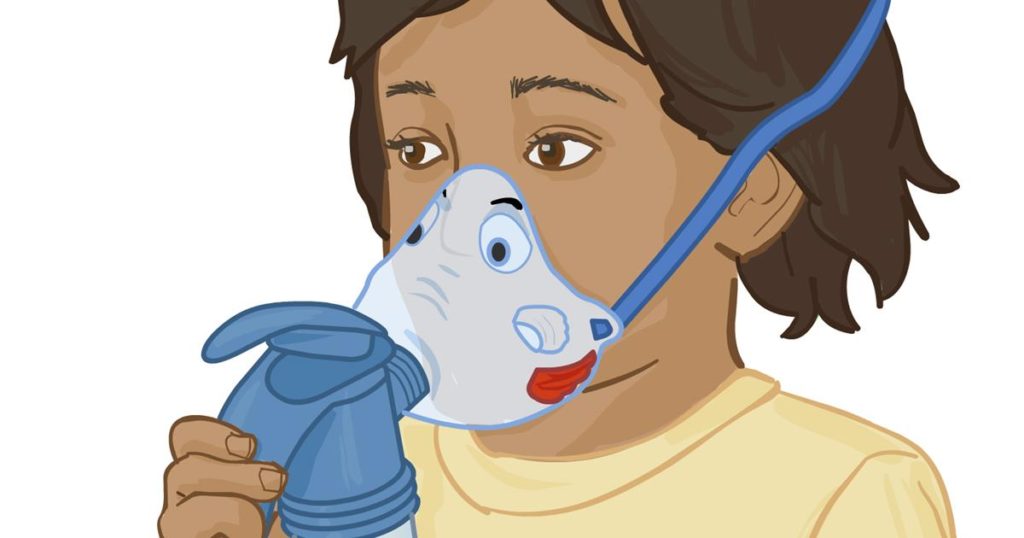Asthma is considered a chronic, usually lifelong, disease that requires a lot of care and lifestyle changes. There are treatment and management options for those who have asthma enjoy life.
Options for Treatment and Care of Asthma
The treatment and care options are focused on controlling and preventing severe episodes. It’s important to note that each case is unique, so the best way to create and manage a treatment plan is to talk to your doctor who knows your full and detailed history.
To give you some useful information about asthma management, we’ll talk about various medical guidelines.
Inhalers
Most asthma medicines are taken by breathing them in so they go straight into the lungs. You may take these via inhalers (also called puffers) or a nebulizer.
– Inhalers come in two kinds: metered-dose inhalers and dry-powder inhalers. Metered dose inhalers come in a canister attached to a mouthpiece, whereas dry-powder inhalers deliver asthma medicine as a dry powder.
 – A nebulizer is a machine that turns liquid medicine into an inhalable mist. If you’re having a hard time using inhalers, you may opt to use a nebulizer instead.
– A nebulizer is a machine that turns liquid medicine into an inhalable mist. If you’re having a hard time using inhalers, you may opt to use a nebulizer instead.
Long-term versus quick-relief
There are two main kinds of asthma medicines: long-term control medications and quick-relief medications or inhalers.
1. Long-term control medications
Long-term control medications are important in preventing symptoms and keeping them under control. If used daily, they may help prevent the onset of symptoms as well as severe flare-ups2. These may consist of the following:
– Inhaled corticosteroids, which reduce swelling in the airways and mucus in the lungs. They are considered one of the most effective medications for asthma.
– Inhaled long-acting beta agonists, which smoothen the linings of the airways and help relax the muscles. They should be used alongside inhaled corticosteroids.
– Combination inhaled medicines, which contain both a corticosteroid and a long-acting beta agonist.
– Biologics, which are shots or infusions administered every few weeks. They target specific cells or protein the body to reduce and prevent airway irritation and inflammation.
– Leukotriene modifiers, taken either in pill or liquid form. They smoothen and relax the airways for easier breathing.
– Cromolyn sodium, which is a non-steroid medicine, also taken by inhalation.
– Theophylline, which is taken orally in the form of a pill, syrup, or capsule.
– Oral corticosteroids, taken either as a pill or a solution. They may be prescribed to patients whose symptoms do not improve after taking other asthma medications.
2. Quick-relief medications
Also called short-acting bronchodilators, quick-relief medications are used to relieve acute symptoms or manage a sudden asthma episode. Some also refer to these s as “rescue inhalers.”
Bronchodilators relieve asthma symptoms by opening up the airways within a minute after taking them, with the effects lasting for two to four hours3. They are also used to prevent exercise-induced symptoms of asthma.
Examples of quick-relief medications1 are:
– Short-acting beta agonists, which are inhaled medications4. They are one of the top choices for quick relief of asthma flare-ups. An example is albuterol, which is available as an inhaler and as a solution for nebulizers.
– Anticholinergics, which open the airways and reduce mucus in the lungs. However, they work more slowly than short-acting beta agonists. Examples include ipratropium bromide and tiotrpium bromide5.
– Combination medicines for quick relief of asthma, which contain both a short-acting beta agonist and an anticholinergic. These may be taken via a nebulizer or an inhaler.
In creating an asthma treatment and care with your doctor, you need to track your symptoms in detail.
Note that this article is not intended to be a substitute for professional medical advise, diagnosis or treatment. Always seek the advise of your doctor or other qualified health provider with any questions you may have regarding a medical condition.
——————-
[1] Asthma and Allergy Foundation of America. Asthma treatment. Reference: https://www.aafa.org/asthma-treatment/
[2] Mayo Clinic. Asthma treatment: 3 steps for better asthma control. Reference: https://www.mayoclinic.org/diseases-conditions/asthma/in-depth/asthma-treatment/art-20044284
[3] WebMd. Bronchodilators (Rescue Inhalers): Short acting and long acting types. Reference: https://www.webmd.com/asthma/guide/asthma_inhalers_bronchodilators#1
[4] Palo Alto Medical Foundation. Rescue reliever medications and short-acting beta agonists. Reference: http://www.pamf.org/asthma/medications/inhaled/shortacting.html
[5] Palo Alto Medical Foundation. Anticholinergics. Reference: http://www.pamf.org/asthma/medications/inhaled/atrovent.html
